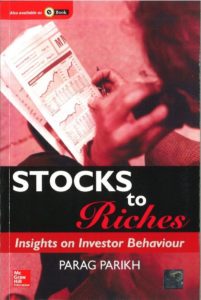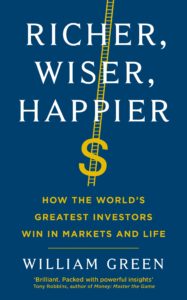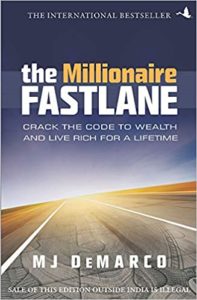
Rights issue: how to approach rights entitlement
The Bharti Airtel rights issue has attracted attention for its sheer size of Rs 21,000 crore, next to Reliance Industries’ rights issue size of over Rs 50,000 crore last year.

The Bharti Airtel rights issue has attracted attention for its sheer size of Rs 21,000 crore, next to Reliance Industries’ rights issue size of over Rs 50,000 crore last year.

None of these four books are particularly ‘PrimeInvestor’ topic – relating to personal finance or FinTech. Nevertheless, I thought I’ll share my thoughts on these books – 4 of them – in a brief note. Some of these books are quite popular, and all of them are worth your time, if the topic interests you.

The balanced advantage category (called the balanced advantage/dynamic asset allocation category or BA/DAA) has received a lot of attention, after a whopping collection of Rs 12,000 crore by SBI Balanced Advantage during its recent NFO. This category is mostly seen as one that delivers equity returns with less risk or one that can be used as an income generation option – neither of which are quite right. In this report we get into detail about one of our already recommended funds in this space, while also explaining when and how to use a fund in this category.

Cred Mint, as noted earlier, is a peer-to-peer lending platform. What this means is, simply put, people lending to each other by using an intermediary service. By using Cred Mint, a customer can either borrow or lend to other Cred customers at “attractive” rates. For lenders, Cred is promising interest rates “up to 9%”, which is significantly higher than bank FD rates today.
When a stock recomendation we give runs up sharply, what should be your course of action? Should you exit or should you hold or should

In the first of our updates in this review cycle, we explained the changes we have made to Prime Funds, our recommended fund list. In this second update, we thought to cover two different aspects: one, changes we made to our MF Review Tool, in the way we call out our recommendations. Two, trends we have observed unfolding over the past couple of quarters that we’re keeping a watch on.

Stocks to Riches explains the fundamental concepts one needs to understand, to achieve success in the stock markets. Concepts like investing, differences between trading and speculation, loss aversion, sunk cost fallacy (and how to avoid falling into it), decision paralysis, mental accounting, and herd mentality. Every investor has dealt with and will have to deal with these situations in their investment journey. So having all these concepts neatly compiled and explained in one book certainly helps.

There are few things that are so beguilingly simple yet devilishly complicated as investing in the stock market. There are but a few hundred stocks

Analysis beyond the P&L and the Balance Sheet is a must if we have to take a long term view of any company. I am not referring to fundamental or technical factors, but to more number work based on the published accounts. I am referring to the cash flow. My approach is different from what most textbooks would prescribe. Statutorily the accounts do carry something called the ‘funds flow’. That is not what I mean when I talk about ‘cash flow’. In the past, during a few of my presentations, I have taken up some analytical work on companies like Sintex, ABG Heavy Industries where a reconstruction of the cash flow showed that the story was vastly different from what the EPS and the PE numbers were telling. A solid cash flow analysis can tell us what the health of the business is and based on what current and likely future trends are, what would be the outcome.

SEBI has come out with its order regarding l’affaire Franklin Templeton debt funds. The 100-page document is categorical in its indictment of the AMC and the ways in which these debt funds were managed. 2 messages are clear from the order: One, investor protection is paramount to the regulator. Two, fund managers and AMCs cannot take their fund management responsibility lightly.

We’ve heard of fusion music, we’ve heard of fusion cuisine, so why not a fusion book?
Colour me naive, but when I picked up ‘The Dhandho Investor’ – a book with an Indian author and an Indian name, I thought it would be about Indian markets and for Indian investors. It was not. Although the author is Indian, and there are many ‘Indian’ anecdotes in the book, it is aimed at an American audience.
But that should not stop you from grabbing it and reading it. It’s a delightful book – expertly written with ideas that you can use in any free market economy.

repreneur forum that I follow, someone asked a question to the group – “Which books made you the most money?”. The answers that followed ranged across topics of investing to motivational to actual business books. But one book that got the most mention was this book by M J DeMarco titled, “The Millionaire Fastlane”.
However, people who commented on this recommendation seemed quite polarized. Some of them REALLY liked the book, and other others REALLY hated it.
So, I had to buy and read it. 🙂
I just finished it, and I have to say, I hated it.
But, if you read it, you may like it. And that’s ok. While not quite liking it, I could quite see why some people will really find it inspiring or at least, alluring.
In this review, let me give you a summary of what the author says, and tell you what I thought about the ‘fastlane’ he recommends.
Hold On
You are being redirected to another page,